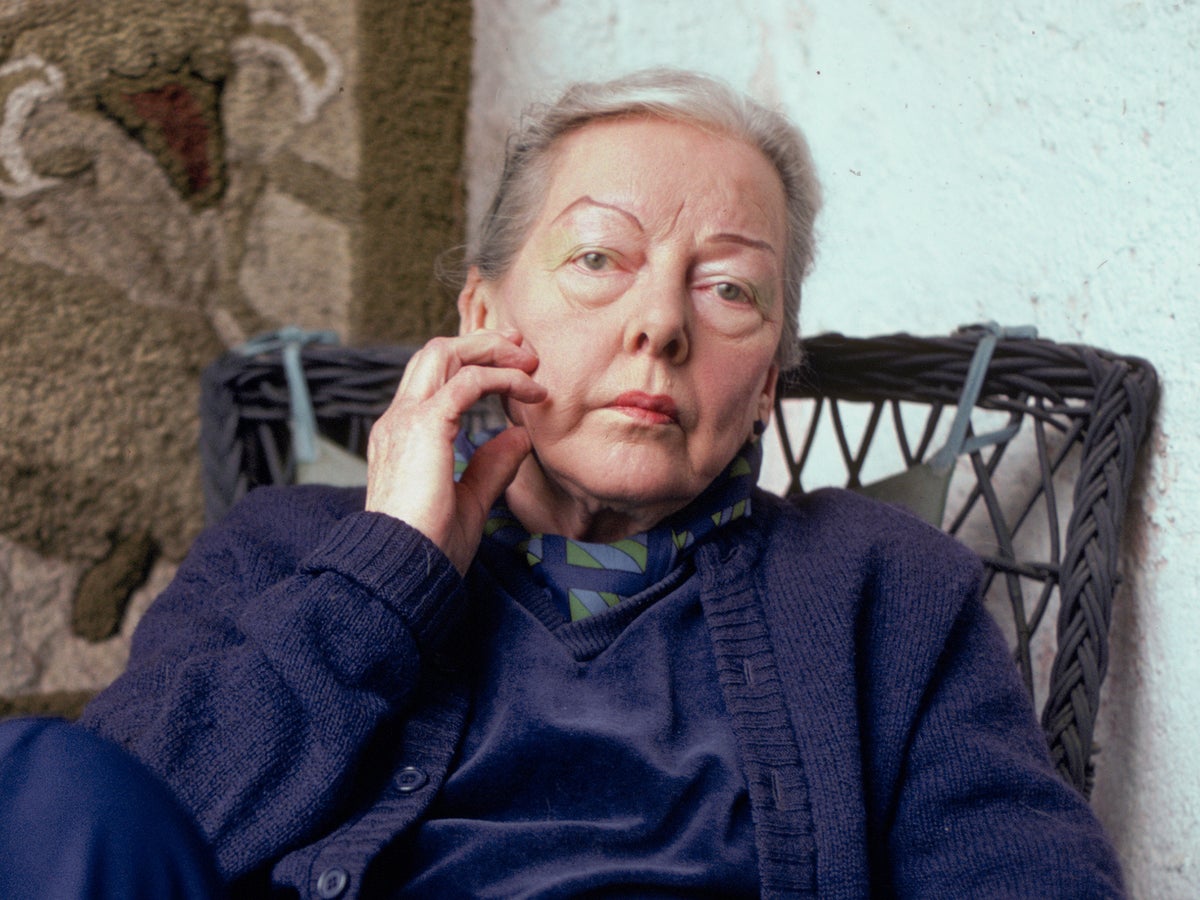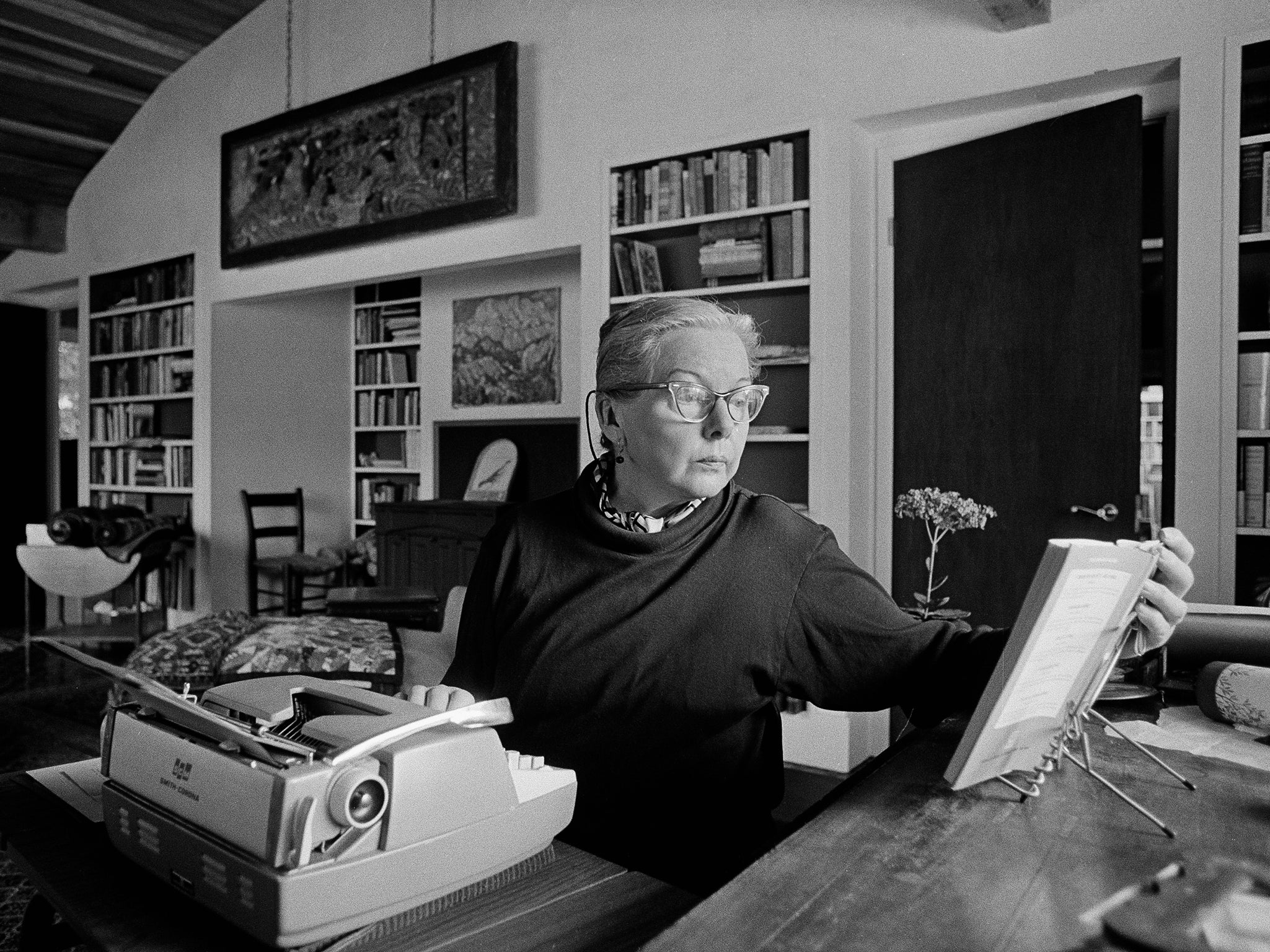
After a lifetime spent in awe of an excellent meal, Mary Frances Kennedy Fisher died at the age of 83 on 22 June 1992, with – we very much hope – a belly full of the seafood she so adored. Only a year before her death, an LA Times profile found the writer at her ranch in Sonoma, California, “propped up on pillows” but still enthusiastically knocking back oysters baked with a spinach topping. They were, wrote Ruth Reichl, “one of the few sensual pleasures left” to Fisher, who was suffering from Parkinson’s disease. Her voice was “reduced to whisper”, and she was unable to read or hold a pen to write. An oyster feast, then, was a small but vital moment of celebration, matched only by the friendly cats who would leap onto her bed during the interview.
Throughout her career Fisher was the very opposite of the food-as-fuel brigade. The act of consuming food tends to be reduced to two categories: eating to live or living to eat. Fisher fell firmly in favour of the latter. Her elegant, excitable prose melded the practical with the sensual; eating was a necessity, yes, but it could also be the highlight of your day – a chance to embrace every last drop, scoop and mouthful of what life had to offer. Yet food also provided a much-needed foil to the darker moments of Fisher’s life, including the loss of her brother and second husband to suicide within the same year.
Fisher’s melding of food writing with personal experience set the template for so many, from Nigella Lawson’s chicken recipe in her 2010 cookbook Kitchen – which “brings our long-absent mother back to the kitchen and the table with us” – to the impassioned personal essays found in contemporary food newsletter Vittles. Recent republications by Daunt Books of Fisher’s most-loved works – the next being a new version of 1989’s An Alphabet for Gourmets this coming November, complete with a foreword by young British cookbook author Ella Risbridger – have gone some way in confirming Fisher as one of the greats, but she’s still a name that’s rarely discussed outside of foodie circles. But there were arguably very few like her before she began writing.
In the introduction to her first book, 1937’s Serve It Forth, Fisher briefly discusses the kinds of books about “what to eat” that were on the market in the early 20th century. There were just two, she argued, and the first sort were deathly dull, “stodgy [and] matter-of-fact”. The second kind were “usually French” and perhaps unnecessarily lavish. Fisher’s own writing fell into neither camp, definitely not boring but certainly not overblown either, giddily celebrating nourishment in all its forms. Serve It Forth – like the 30-odd published works that would follow, including posthumous collections of letters and journals – was direct, witty, and instructive. A zippy skip through the history of cuisine, the 150 pages might not have been particularly in-depth but entertaining they were, celebrating the discovery of the humble spud, Roman epicures and Elizabethan sugared meats alike.
“I could just as well have written about gardening, or love, or politics, or any of the great things,” explained Fisher in a 1982 interview with Christian Science Monitor. “But none of these exist unless we’ve had something to eat.” Specifically Fisher herself, who truly excelled when ruminating upon her own dining experiences, especially during her years spent living in France. These are touched upon in Serve It Forth, but dived into with abandon in 1943’s exultant memoir The Gastronomical Me. It was published when she was 35 years old and features an imposing character called Chexbres; a nom de cuisine given to her second husband – and the love of her life – writer, illustrator and painter Dillwyn Parrish.
Mary Frances Kennedy was born in 1908 in the city of Albion, Michigan, and her family moved to the warmer climes of California when she was a child. She never denied she lived a privileged life, enjoying the fruits of a private education, as well as writing in her teens to help her father, who was the editor of the local newspaper. Eventually she would arrive at the famous liberal arts school Occidental College, where she met her first husband, Alfred “Al” Fisher. They married in 1929 – when Mary Frances was just 21 – and then moved to France, so Al could complete his doctorate at the University of Dijon.
There, the couple moved into a guest house run by a local family and it is here Fisher fell in love with French food – an obsession shared by her equally ravenous contemporary, the chef Julia Child, who was born four years after Fisher. They returned to California a few years later, and Fisher’s writing quickly took off. Her first printed piece was in a 1935 issue of the Automobile Club of Southern California’s magazine, the publication of which coincided with Dillwyn Parrish and his wife Gigi becoming close friends with the Fishers.
During this time Fisher was living in the Eagle Rock and Highland Park neighbourhoods of Los Angeles, working part-time in a card shop and regularly visiting the LA Public Library to research old cookery books. Inspired, she started writing essays on food, and Parrish’s sister, the children’s novelist Anne Parrish, showed them to her publisher at Harper’s. The writings would become Serve It Forth, which was released in 1937, the same year Fisher and Al separated. Fisher long denied that anything untoward had yet happened between her and Parrish before her and Al’s split. Nonetheless, the following year Fisher and Parrish would marry, the pair living in Switzerland until war broke out in 1939.
In 1941, Fisher would publish one of her best-loved works, Consider the Oyster, an impassioned tribute to the beauty of the bivalve. A mixture of recipes – including “Oysters Rockefeller” inspired by the legendary New Orleans seafood restaurant Antoine’s – and short, effusive essays, the book not only highlighted the oyster’s rumoured aphrodisiac powers, but also looked at the danger they could wreak. One essay starts with Fisher casually recalling the gravestone of a man in Maine which read: “He died of a bad oyster”. Upon the book’s 2018 reprint, food writer Ruby Tandoh praised Fisher for her ability to mix a touch of darkness into her prose. “This writing isn’t the glossy, perma-happy lifestyle journalism that dominates so much of the food media now,” explained Tandoh. “Where there is hunger, there is the shadow of death, yes, but also the promise of pleasure.” The book’s occasionally existential tone gloomily chimed with the fact that in 1941 Parrish – whose leg had been amputated due to clots and gangrene caused by a condition called Buerger’s disease – would shoot himself in woodlands near the home in Hemet, California, he shared with his much-loved wife. Parrish died just before Fisher finished writing the book.
The following year, Fisher would focus on the nation’s troubles rather than her own, writing the celebrated How to Cook a Wolf, a practical guide for home cooks dealing with wartime food shortages. Decades before Jack Monroe’s Tin Can Cook, she offered advice on how to jazz up canned foods, as well as ways to make calves’ brains palatable and whip up DIY mouthwash. Modern editions of the book, however, discourage readers from the latter, due to the inclusion of poisonous borax. Around the same time, the quick-witted Fisher would pick up work at Paramount Studios, writing jokes for Bob Hope, Bing Crosby and Dorothy Lamour’s popular Road to… movies. She was so good at it that the studio accused her of plagiarism when it took her only half an hour to write a flawless three-minute sketch.

She followed that with her masterpiece, The Gastronomical Me, which was written in three months during her first pregnancy. It holds numerous evocative images, from dining on decade-old paté in Burgundy and cooking strawberry jam with her grandmother as a child, to what seems very much like a crush on an older girl at boarding school when enjoying her very first oyster. The book also features a powerful chapter called “The Flaw”, an anti-war polemic served up as an ode to eating white beans and drinking fizzy wine on a Swiss train in the summer of 1939.
Fisher would carry on writing – and of course, eating – for many decades. In 1982, upon the publication of a five-decade-spanning family and travel anthology called As They Were, TheNew York Times wrote that perhaps the book would “take the gastronomic curse off Mrs Fisher and convince a world quite ready to acclaim her as the doyenne of food writers that she deserves much higher literary status”. The assertion that food writing isn’t quite as important as other kinds of writing isn’t just silly, but markedly ill-informed – not least because, as Fisher often wrote herself, it is food writing which brings all the other kinds of writing together.
“It seems to me that our three basic needs, for food and security and love, are so mixed and mingled and entwined that we cannot straightly think of one without the others,” she wrote in the foreword to The Gastronomical Me. “So it happens that when I write of hunger, I am really writing about love and the hunger for it.”







